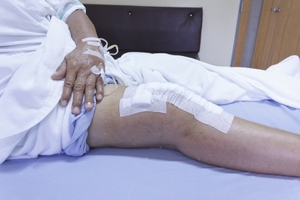As discussed in this series, though many of you may be currently tackling the medical school admissions process, it’s never too early to start casting an eye towards your future specialty choice. In the current environment, there are hundreds of hopefuls every year vying for the 1-10 training spots nation-wide in each specialty.
Next in our ‘When I grow up’ series, we’re taking a look at orthopaedic surgery. Although this is technically a sub-specialty of surgery, it is such a large group that it deserves special mention. Orthopaedic surgery is one of the most popular surgical specialties, and has such a gigantic surgical group the Orthopaedic Society of Australia is considering breaking away from the Royal College of Surgeons and forming its own representative body.
Orthopaedic surgery concerns operations that involve the bone and muscle – you may see these surgeons conducting hip replacements, carpal tunnel releases, fracture repairs, or even working with neurosurgeons in correcting spinal injuries. Orthopaedic surgeons are lovingly referred to as ‘orthopods’, and are often ridiculed as a bit of a Neanderthal bunch, mostly because of their propensity to use instruments in surgery that resemble hammers and clubs. Indeed, the surgeries conducted by orthopaedic surgeons are commonly (though not always) quite messy affairs; bones are generally ripped from their places, metallic plates are smashed into place, and muscles are exposed.
Medical students in orthopaedic rotations will often work long and hard, and unfortunately will typically be stuck with heavy-lifting jobs in surgical theatre. Many students have had to hold a leg of an overtly obese patient for a significant amount of time, whilst a surgeon hammers a femur back into place – it can truly be back-breaking work! Especially with the pressure of an impending berating from the surgeon if you disrupt his/her procedure by moving the limb you are holding even slightly.
One of the major issues with orthopaedic surgery is the vast gender imbalance in the specialty. Surgery is often criticised for a lack of female clinicians (especially in senior roles), and no other sub-specialty epitomises the classic ‘boys club’ of surgery than orthopaedic surgery. In my own rotation, out of a team of approximately 15 surgeons, not one was female. This is extremely common, but it is an area that the Orthopaedic Society is working hard to address – it might take some time, but the macho-culture and significant barriers that have pervaded the specialty for female doctors is slowly dissipating.
It is important not to consider orthopaedic surgeons as the ‘dumb’ group of surgeons, a label received primarily from other surgical specialties. Orthopaedic surgery is just as difficult to enter as any other, and especially because it is so wildly popular among junior doctors. Physiotherapists and other physical allied health professionals are at a greater advantage in entering this specialty when they take on medical school. Practical experience and being in orthopaedic operation theatres as much as possible are highly regarded attributes in this speciality, with a slightly reduced focus on research credentials.
I hope this has helped give a bit of light at the end of the tunnel, and revealed some elementary details on another one of the wonderful career paths that you will to choose from!
Check out our GAMSAT To Med School Podcast for more interesting news, tips & tricks about the GAMSAT, applying to medical school, and life at med school.






